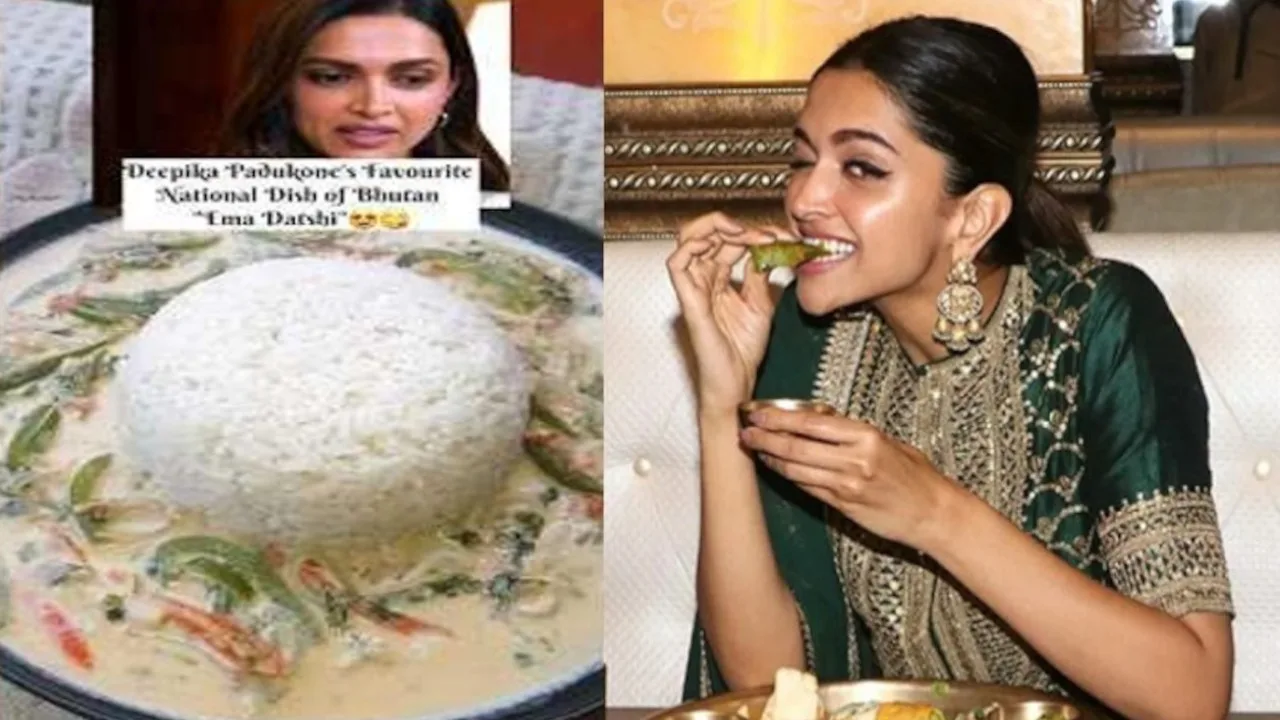Calling all spice lovers and cheese enthusiasts! Buckle up for a culinary adventure to Bhutan, the mystical kingdom nestled in the Himalayas, where a fiery stew reigns supreme: Ema Datshi. This national treasure isn’t just a dish; it’s a taste explosion that embodies Bhutan’s spirit – bold, vibrant, and unforgettable.
A Spicy Symphony of Flavors
Ema Datshi translates to “chili” (ema) and “cheese” (datshi) in Dzongkha, the Bhutanese language. It’s a deceptively simple stew made with fiery peppers, locally produced cheese, and a touch of magic. Don’t be fooled by the limited ingredients; Ema Datshi boasts a depth of flavor that will tantalize your taste buds. The succulent cheese acts as a creamy canvas for the dance of the chilies, offering a delightful contrast between heat and richness.
Cheese Fit for Royalty (or You!)
The heart of Ema Datshi lies in the cheese, traditionally called Datshi. Made from cow’s or yak’s milk, Datshi has a distinct tangy flavor that complements the chilies perfectly. Unlike Western cheeses, Datshi has a slightly crumbly texture that melts beautifully into the stew, creating a smooth and comforting base.
A Spice Odyssey: Tailoring the Heat
Ema Datshi isn’t a one-size-fits-all dish. Bhutanese families have their own cherished variations, allowing them to customize the heat level. Green chilies offer a fresh, grassy heat, while dried red chilies pack a more intense punch. Some even use a combination of both, creating a truly fiery experience.
Beyond the Stew: A Culinary Journey
Ema Datshi is more than just a dish; it’s a window into Bhutanese culture. It’s a staple food enjoyed by people from all walks of life, from farmers in the valleys to monks perched atop ancient monasteries. It’s served with Ema Datshi Kazu, a fragrant red rice that perfectly complements the richness of the stew.
A Dish Fit for Bollywood Royalty
Ema Datshi’s fame transcends borders. Bollywood superstar Deepika Padukone has publicly declared her love for this fiery dish, further solidifying its status as a culinary icon.
Bringing the Heat Home: A Recipe for Your Kitchen
While a trip to Bhutan is the ideal way to experience Ema Datshi in its authentic form, you can still recreate this fiery magic in your own kitchen. Here’s a simple recipe to get you started:
Ingredients:
- 1 tablespoon vegetable oil
- 1 cup crumbled feta cheese (or a similar cheese)
- 4-5 large green chilies, chopped
- 1 large onion, thinly sliced
- 2 tomatoes, chopped
- 3 garlic cloves, minced
- Salt to taste
- Chopped fresh parsley (optional)
Instructions:
- Heat Up the Dance Floor: Heat oil in a pan over medium heat. Add the chopped onions and garlic, and sauté until the onions turn translucent.
- Introducing the Stars: Add the chopped chilies and cook for a few minutes, stirring frequently. Be mindful not to overcook them, as you want to retain some of their crispness.
- The Tomato Tango: Add the chopped tomatoes and simmer for 5-7 minutes, or until they become soft and release their juices.
- The Creamy Embrace: Gently stir in the crumbled cheese. Let it melt slowly, creating a smooth and creamy sauce.
- Seasoning Symphony: Once the cheese is melted, add salt to taste. You can also add a pinch of red chili flakes for an extra kick (optional).
- The Grand Finale: Garnish with chopped fresh parsley (optional) and serve hot with steamed red rice.
Ema Datshi Variations: A Spicy Adventure Awaits
The beauty of Ema Datshi lies in its versatility. Here are some popular variations to explore:
- Kewa Datshi: This milder version replaces the chilies with potatoes, creating a creamy and comforting stew.
- Shamu Datshi: Similar to Kewa Datshi, Shamu Datshi uses mushrooms instead of chilies, offering a delightful earthy twist.
- Ema Datsi with Spinach: For a burst of greens, add chopped spinach to the stew along with the chilies.
Beyond the Plate: The Cultural Significance of Ema Datshi
Ema Datshi is more than just a delicious dish; it’s a symbol of Bhutanese culture and identity. It reflects the nation’s love for bold flavors, its reliance on locally sourced ingredients




